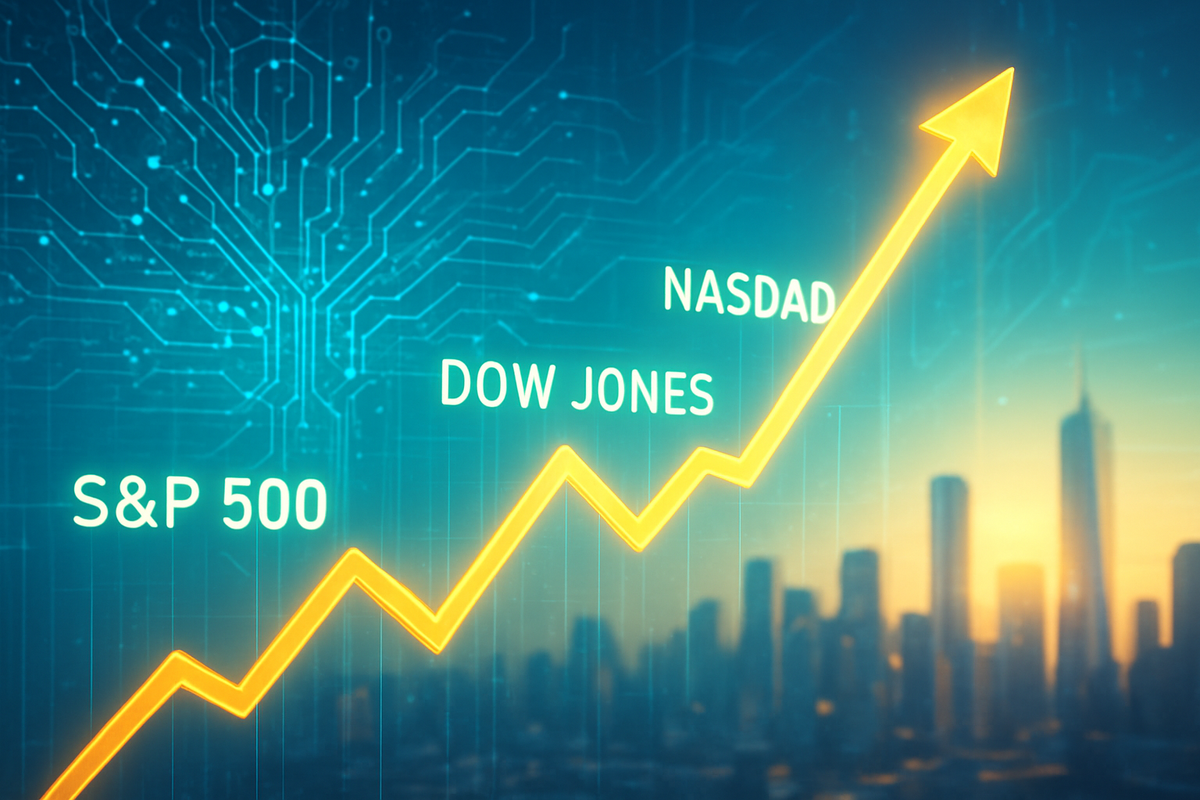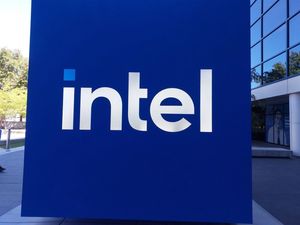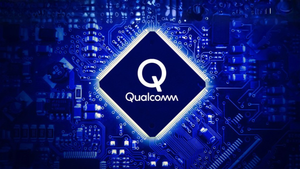
New York, NY – October 28, 2025 – The financial markets are buzzing with unprecedented optimism as the S&P 500, Dow Jones Industrial Average, and Nasdaq Composite have all surged to new all-time highs in late October 2025. This synchronized rally across the major indices signals a robust investor confidence, fueled by a potent cocktail of strong corporate earnings, renewed hopes for a U.S.-China trade resolution, and the persistent expectation of accommodative monetary policy from the Federal Reserve. The record-breaking ascent has extended Wall Street's bullish streak, prompting both celebration and careful analysis among market participants as they navigate these uncharted territories.
The immediate implications of this historic surge are overwhelmingly positive, reflecting a period of significant economic and corporate strength. The broad-based nature of the rally, with even the small-cap Russell 2000 reaching new highs, suggests a widespread buoyancy rather than a narrow, sector-specific ascent. While the exhilaration is palpable, market observers are keenly watching for any shifts in economic data or geopolitical developments that could challenge this elevated market sentiment.
A Triumphant Week: Indices Carve Out New Milestones
The week of October 27, 2025, will be etched into financial history as the period when all three major U.S. stock indices decisively breached previous records. The S&P 500 (SPX) achieved an all-time intraday high of 6,903.23 points on October 28, 2025, building on its previous day's record closing high of 6,875.16 points on Monday, October 27, 2025, marking its first close above the 6,800 threshold. Similarly, the Dow Jones Industrial Average (DJIA) soared to an all-time intraday high of 47,564.52 points on October 27, 2025, closing at a fresh record of 47,544.59 points on the same day, having first surpassed the 47,000 mark just days earlier on October 24, 2025. The technology-heavy Nasdaq Composite (IXIC) was not to be outdone, recording an all-time intraday high of 23,658.66 points on October 27, 2025, and closing at a new record of 23,637.46 points, extending its impressive run which saw a prior closing high of 22,941.67 points earlier in the month on October 7, 2025.
This remarkable surge is the culmination of several converging factors. The ongoing third-quarter earnings season has delivered a string of impressive results, particularly from the technology sector, which has consistently exceeded analyst expectations. This robust corporate performance has been a primary driver, underpinning investor confidence in the underlying health of the economy. Furthermore, optimism surrounding a potential trade deal between the United States and China, ahead of a highly anticipated meeting between President Donald Trump and Chinese President Xi Jinping, has significantly de-escalated trade tensions, providing a crucial tailwind for global markets.
Adding to the bullish sentiment are the growing expectations of further interest rate cuts by the Federal Reserve. Cooler-than-expected inflation data for September has reinforced the market's belief that the Fed will opt for an accommodating monetary policy at its upcoming meeting on Wednesday, October 29, 2025. This prospect of cheaper borrowing costs and increased liquidity has historically been a powerful catalyst for stock market appreciation. Key players driving this rally include major technology behemoths like Microsoft (NASDAQ: MSFT), Meta Platforms (NASDAQ: META), Alphabet (NASDAQ: GOOGL), Amazon (NASDAQ: AMZN), and Apple (NASDAQ: AAPL), all of whom are poised to report earnings this week, with strong pre-earnings momentum. Companies heavily invested in the artificial intelligence boom, such as Qualcomm (NASDAQ: QCOM), Nvidia (NASDAQ: NVDA), and Advanced Micro Devices (NASDAQ: AMD), have also seen significant gains due to advancements in AI chips and strategic partnerships. Even PayPal (NASDAQ: PYPL) experienced a notable jump following its partnership announcement with OpenAI. While the market sentiment is largely upbeat, some analysts voice caution, pointing to elevated valuations and the potential for rapid shifts if economic data or geopolitical risks take an unexpected turn. The concentrated market capitalization in a few "Magnificent Seven" tech stocks also highlights a dependency that could lead to volatility if their earnings were to disappoint.
Who Wins and Who Faces Headwinds in This Bull Market?
The current market's ascent to all-time highs is creating clear beneficiaries while also posing challenges for others, largely dictated by their exposure to the driving forces of this rally: technology, AI innovation, improving trade relations, and the prospect of lower interest rates. The information technology sector stands as the unequivocal champion, with mega-cap firms at the vanguard of artificial intelligence and semiconductor advancements experiencing unprecedented growth. Companies like Nvidia (NASDAQ: NVDA), a titan in AI chips and data center infrastructure, continue to see their valuations soar, having even touched a $4 trillion market capitalization earlier in the year. Similarly, Alphabet (NASDAQ: GOOGL), with its Gemini AI platform, and Microsoft (NASDAQ: MSFT), a major investor in OpenAI, are leveraging their vast ecosystems and cloud capabilities to dominate the AI landscape. Other tech giants such as Meta Platforms (NASDAQ: META), Advanced Micro Devices (NASDAQ: AMD), and even data analytics specialist Palantir Technologies (NYSE: PLTR) are riding the AI wave, translating innovation into substantial market gains. The "Magnificent Seven" members, including Amazon (NASDAQ: AMZN) and Apple (NASDAQ: AAPL), are also expected to continue their strong earnings performance, further solidifying their market leadership and justifying their premium valuations, though concerns about stretched valuations persist among some analysts.
Beyond the tech sphere, sectors poised to benefit from improved trade relations are also seeing a boost. Optimism surrounding a potential U.S.-China trade deal and existing U.S.-EU agreements are reducing global market volatility, particularly benefiting manufacturing, certain semiconductor companies, and agriculture through reduced tariffs and increased export opportunities. The energy sector, especially in liquefied natural gas (LNG) and renewable energy, stands to gain from increased purchasing commitments, bolstering America's position as an energy exporter. Furthermore, the anticipation of Federal Reserve interest rate cuts—with a 25 basis point cut in September 2025 and another likely in October—is making borrowing cheaper and equities more attractive. This environment is particularly favorable for growth stocks, often found in the tech sector, as lower rates enhance the present value of their long-term cash flows. Real estate and home construction companies, such as Bellway (LSE: BWY), could see a resurgence in demand due to lower mortgage rates. Regional banks may experience increased loan demand and reduced deposit costs, while the automotive industry could see a boost in consumer spending. Even utilities are emerging as an unexpected beneficiary, driven by the massive power demands of the expanding AI data center infrastructure.
However, not all companies are benefiting equally, and some face potential headwinds. The very concentration of the market's gains in a few mega-cap tech and AI-related firms raises concerns about overvaluation. The Bank of England has previously warned of a potential "sudden correction" if the enthusiasm around AI's impact outpaces actual monetization or if material doubts about its real-world benefits emerge. Companies whose valuations are not underpinned by sustainable earnings growth, or those outside the "Magnificent Seven" that struggle to narrow the earnings growth gap, could underperform. Instances of insider selling in some popular technology companies, including Meta Platforms (NASDAQ: META), Dell Technologies (NYSE: DELL), and Snowflake (NYSE: SNOW), suggest a degree of internal caution even amidst the broader market euphoria. In a "risk-on" environment, traditionally defensive sectors and safe-haven assets tend to see capital rotate out. While healthcare (XLV) has inherent demand, its relative underperformance compared to the broader market in early 2025 suggests it might see less capital inflow when growth opportunities abound. Similarly, gold (XAU) and silver (XAG) prices have retreated as investors shift away from safe-haven assets toward more speculative growth opportunities. Furthermore, while trade optimism is high, continued protectionist measures or a strong U.S. dollar could still negatively impact companies reliant on exports or importing specific materials, potentially increasing costs for sectors like packaging, automotive, and construction.
A Broader Lens: Unpacking the Wider Significance
The monumental achievement of the S&P 500, Dow, and Nasdaq reaching all-time highs in late October 2025 transcends mere numerical records; it reflects profound shifts and accelerating trends within the global economy and financial markets. At its core, this market surge is inextricably linked to the burgeoning influence of Artificial Intelligence (AI). AI is not just a trend but a primary catalyst, projected to deliver a multi-trillion-dollar impact by enhancing efficiency, reducing costs, and unlocking entirely new revenue streams across virtually every sector. Companies at the forefront of AI innovation, from chipmakers to those integrating sophisticated AI solutions, are witnessing their market capitalizations swell, albeit with some analysts cautioning about potentially stretched valuations that imply aggressive future earnings growth. This technological revolution is reshaping industries, pushing competitors to innovate at an unprecedented pace, and creating new opportunities for strategic partnerships in the supply chain, particularly for those serving the booming tech and industrial sectors.
Globalization continues to play a pivotal role, influencing business strategies through market expansion, cost efficiencies, and intensified competition. While it fosters innovation, it also necessitates adaptation to diverse regulatory and cultural landscapes. The current market optimism is partly fueled by a renewed sense of stability in global trade, particularly with the easing of U.S.-China trade tensions and existing U.S.-EU agreements. This positive shift can reduce supply chain volatility and bolster investor confidence in internationally exposed companies. Concurrently, monetary policy remains a critical determinant. The market's anticipation of further interest rate cuts by the Federal Reserve, despite robust economic growth, is a significant driver of investor optimism. Historically, accommodative monetary policy tends to inflate asset prices by increasing the present value of future corporate cash flows. However, some experts are beginning to question the necessity of further cuts if the economy is already demonstrating such strong performance, raising concerns about potential overheating or future inflationary pressures.
The ripple effects of this sustained market rally are far-reaching. On the economic front, a discernible "wealth effect" is emerging, where increased asset values translate into higher consumer spending and business investment, further bolstering economic activity. AI investment, for instance, has been a significant contributor to U.S. GDP growth in the first half of 2025. However, this prosperity is not without its caveats; concerns about the uneven distribution of these economic benefits, potentially exacerbating wealth inequality, are growing. From a regulatory and policy perspective, the elevated valuations and the increasing concentration of market capitalization in a handful of mega-cap technology and AI-related stocks are drawing heightened scrutiny. Regulators are increasingly examining antitrust issues, market fairness, and potential systemic financial stability risks. Furthermore, the rapid advancement of AI and algorithmic trading practices is prompting active exploration of new regulatory frameworks to ensure accountability and mitigate unforeseen risks. The Federal Reserve's future interest rate decisions will be closely watched, as strong corporate performance could influence their assessment of the urgency for further cuts, requiring a delicate balance between stimulating growth and controlling inflation.
Historically, reaching all-time highs is a common feature of prolonged bull markets, and momentum often continues after such milestones. However, the current environment draws parallels to the dot-com bubble of the late 1990s, particularly concerning high valuation metrics and the significant market concentration in a few technology-driven companies. While the dot-com era ultimately contributed to a mild recession, the present macroeconomic context differs, characterized by robust corporate earnings and tangible productivity gains from AI, suggesting a more fundamental underpinning to the current rally. Comparisons can also be drawn to periods of sustained market growth like the 1990s and the post-2008 recovery, both marked by strong economic growth, low interest rates, and the outperformance of innovative tech companies. Nevertheless, it is crucial for investors to remember that market peaks have historically preceded economic downturns, as evidenced in 2000 and 2007, underscoring the importance of vigilance amidst the euphoria.
Navigating the Future: What Comes Next for the Markets
As the stock market celebrates its historic highs in late October 2025, the critical question for investors and companies alike is: what lies ahead? In the short term (late 2025 - early 2026), analysts generally anticipate a continuation of the rally, albeit with potentially heightened volatility. Historical data suggests a strong likelihood of further gains for the S&P 500 (SPX) in the months following all four major U.S. indices closing at record highs. The expected continuation of Federal Reserve interest rate cuts, potentially a second consecutive cut this week and a third by year-end, combined with robust corporate guidance, provides a fertile ground for the bull run to extend. However, a short-term correction or a "healthy reset" remains a distinct possibility, especially around significant earnings reports or unexpected policy shifts. Looking long term (beyond early 2026), the pervasive AI revolution is widely viewed as the primary engine for sustained growth, poised to propel technology companies and broader market indices to new frontiers, contingent on continued economic growth and innovation.
For companies, strategic pivots and adaptations are paramount. Innovation and AI integration must remain at the forefront of corporate strategy, as the effective deployment of AI across operations is becoming a non-negotiable for competitiveness and growth. This is already spurring significant investments and partnerships, such as Nvidia's (NASDAQ: NVDA) strategic investment in Nokia (NYSE: NOK). Companies are also undertaking efficiency drives and cost-cutting measures, including corporate job cuts, to streamline operations and reallocate resources towards high-growth areas like AI development. Furthermore, effective supply chain management remains a crucial adaptation in a dynamic global environment. For investors, a balanced approach combining optimism with caution is advised. Diversification and adherence to long-term investment strategies are essential to navigate potential volatility and shifting monetary policies. Strategies like dollar-cost averaging and rebalancing portfolios are prudent for those concerned about elevated valuations or nearing retirement, allowing them to manage risk by selling some appreciated stocks and reinvesting in less volatile assets like bonds. While the "Magnificent Seven" tech giants have led the charge, investors are increasingly being more selective, discerning between genuine AI-driven growth and mere hype.
The current market environment presents both compelling opportunities and formidable challenges. On the opportunity front, the AI boom continues to open vast avenues in semiconductors, cloud computing, and AI infrastructure, with companies like Nvidia (NASDAQ: NVDA), Qualcomm (NASDAQ: QCOM), and Advanced Micro Devices (NASDAQ: AMD) poised for further gains. Beyond tech, a broadening market participation is evident, with financials, industrials, and utilities showing strong performance, signaling a wider economic recovery. Specific growth sectors like gold mining, driven by record gold prices, and rebounding cruise operations also present attractive prospects. However, significant challenges loom. Market volatility and overvaluation, particularly in certain AI-driven sectors, are persistent concerns, with some experts warning of a potential "AI bubble." Lingering geopolitical tensions, especially concerning U.S.-China trade relations, could introduce headwinds. The risk of inflation resurgence accelerating beyond current levels, potentially impacting future interest rate policies, and unexpected economic slowdowns also remain pertinent concerns. Moreover, the sustainability of massive capital expenditures by cloud providers on AI infrastructure is being questioned, with a potential cyclical downturn foreseen in data storage companies around 2027.
Considering these factors, several potential scenarios could unfold. The most optimistic outcome is a continued bull market, fueled by sustained strong corporate earnings, the pervasive influence of AI driving innovation and efficiency, and accommodative monetary policy with further interest rate cuts. This scenario suggests sustained upward momentum, albeit with intermittent periods of volatility. Alternatively, a moderate correction or increased volatility is a plausible scenario. This could be triggered by unexpected inflation data, shifts in Federal Reserve policy, geopolitical escalations, or disappointing earnings from key companies. History indicates that while corrections are normal, the market has often recovered to new highs. A more pessimistic, though less likely, scenario involves an AI bubble burst, where a significant re-evaluation of AI-related stocks could lead to a broader market downturn. However, many experts believe that even if there's a correction in some overvalued AI companies, the underlying transformative nature of AI will continue to generate lasting value, suggesting a fundamental strength that differentiates it from past speculative bubbles.
The Unfolding Narrative: A Comprehensive Wrap-Up
The stock market's remarkable surge to unprecedented all-time highs in late October 2025 marks a pivotal moment, underscoring a period of robust economic dynamism and fervent investor confidence. The key takeaways from this historic rally are multifaceted: it is primarily fueled by consistently strong corporate earnings, particularly from the transformative technology and AI sectors; a widespread optimism regarding global trade relations, notably between the U.S. and China; and the anticipation of continued accommodative monetary policy from the Federal Reserve. This synchronized ascent across the S&P 500, Dow, and Nasdaq, alongside the Russell 2000, signals a broad-based market strength, reminding investors that new highs are a normal, albeit sometimes exhilarating, component of a healthy, long-term growing market.
Moving forward, the market assessment suggests a continuation of the rally in the near term, bolstered by solid fundamentals and favorable economic conditions. While the current elevated valuations reflect significant investor optimism about future growth, a balanced perspective is crucial. History indicates that investing at market peaks does not necessarily translate to lower long-term returns; indeed, average returns one to three years after a new high can be comparable to, or even exceed, other periods. This resilience is fundamentally supported by robust corporate profits and ongoing economic strength. The market's ability to absorb various headwinds and still reach these milestones speaks to an underlying confidence in sustained innovation and productivity gains.
The lasting significance of this period lies in its reaffirmation of the market's inherent long-term upward bias, driven by relentless innovation, particularly in AI, and the adaptability of public companies. For long-term investors, these milestones underscore the critical importance of maintaining a diversified portfolio and adhering to a disciplined investment strategy, rather than attempting to "time the market." Missing out on periods of significant growth by waiting for an elusive "dip" can be detrimental to overall returns. This current market environment serves as a powerful reminder that market highs often reflect continued economic expansion and are not necessarily harbingers of an immediate downturn.
In the coming months, investors should remain vigilant and closely monitor several key indicators. The Federal Reserve's upcoming decisions on interest rates and any forward guidance will be paramount, as will inflation reports like the Consumer Price Index (CPI) and Producer Price Index (PPI) for signs of persistent pressures or continued moderation. Employment data, including the U.S. Jobs Report and unemployment rate, will offer critical insights into labor market health and consumer spending capacity. The performance of companies in subsequent earnings seasons, especially from the influential technology and AI sectors, will be crucial for sustaining market momentum. Furthermore, reports on consumer spending and confidence will provide a pulse on economic strength, while any further progress or setbacks in global trade developments could impact multinational corporations and broader market sentiment. Amidst this optimism, the prudent investor will ensure their portfolio remains diversified across asset classes and sectors, and will rebalance as needed to manage risk effectively. Balancing enthusiasm with vigilance will be key to navigating the opportunities and challenges that lie ahead in this new era of record-breaking markets.
This content is intended for informational purposes only and is not financial advice





